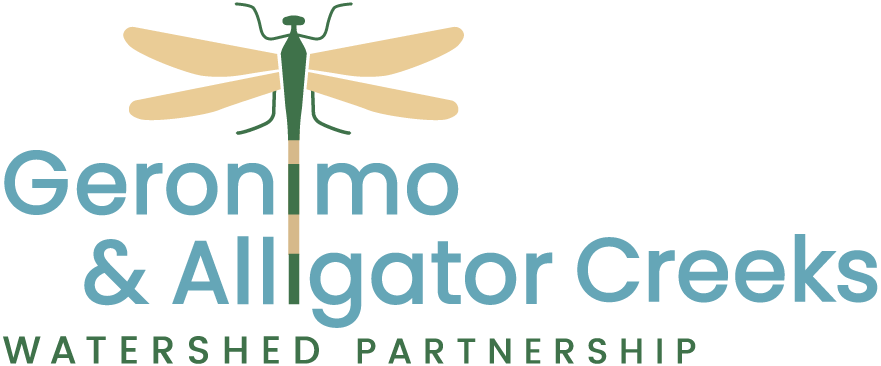A Note from Your Watershed Coordinator
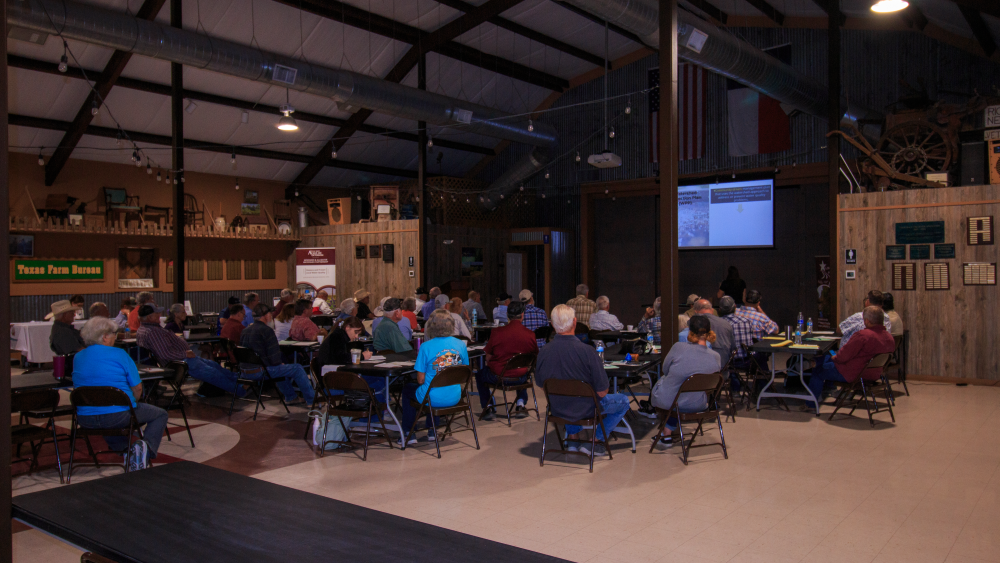
It was wonderful to see so many engaged stakeholders at the September 12 Lone Star Healthy Streams workshop! Together we learned how feral hog management, grazing practices, brush management, and soil health improvement can protect local water quality. We also had the watershed coordinators from Plum Creek and the Lower Cibolo present on their projects. It was a great reminder that no matter which watershed you live in, you can make a difference for local water quality!
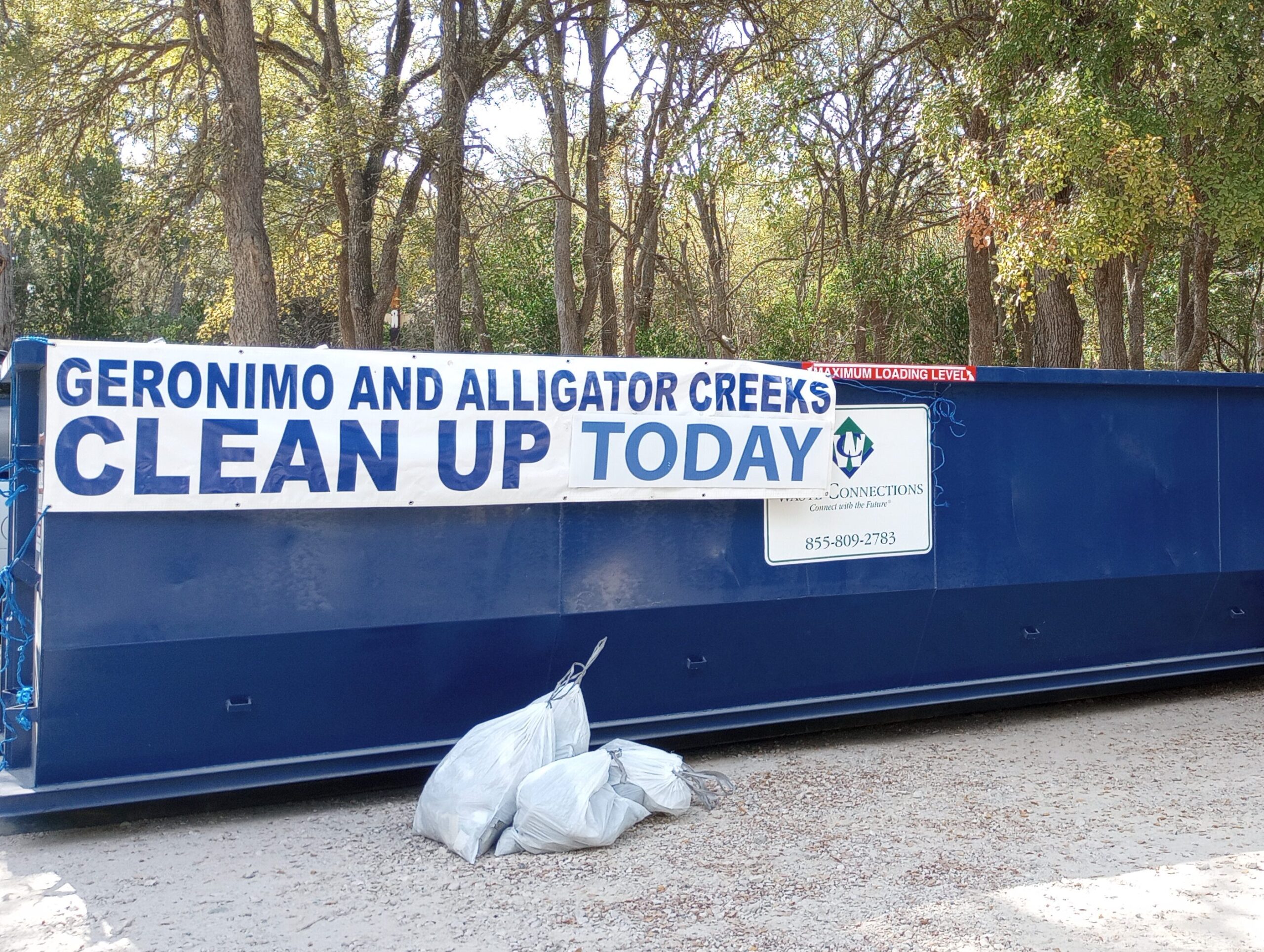
On October 4, we brought community members together again for the Fall Stream Cleanup! This is one of the biggest events of the year, where we work together to pick up litter throughout the watershed. Volunteers got free breakfast tacos, coffee, and event t-shirts. The impact of our volunteers can’t be overstated: since 2013, they have removed over 40,700 lbs. of trash from the watershed!
Planning is in motion for our 2026 educational and outreach events. If you have any ideas for events, or topics you want to learn more about, reach out today with the contact information below!
Annalee Epps
Annalee.epps@ag.tamu.edu
Measurements Matter: E. coli Bacteria
Did you know that Geronimo and Alligator Creeks have elevated levels of E. coli bacteria? This impairment was identified by the Texas Commission for Environmental Quality in 2008, based on water quality data collected in Geronimo and Alligator Creeks. But what do elevated levels of E. coli bacteria mean for water quality? This article continues our series exploring water quality data collected in our watershed and why it matters.
E. coli bacteria are a large group of organisms that can be found in the digestive systems and waste products of warm-blooded animals, including humans. They are also naturally occurring in creeks and streams! The level of E. coli in a water sample is measured in colony forming units per 100 mL (cfu/100mL). To measure cfu, a water sample is collected and taken to a laboratory. There, samples are diluted and incubated on petri dishes. Bacterial colonies are then counted, allowing the estimation of viable bacteria in the original sample.

These bacteria are used as an indicator organism. When levels of E. coli bacteria are elevated, that indicates that the water has come into contact with waste from warm-blooded animals. Other dangerous pathogens could be present in this case, posing a health risk for anyone who is exposed to them. We measure E. coli bacteria because it is a relatively quick and inexpensive process compared to testing for other pathogens.
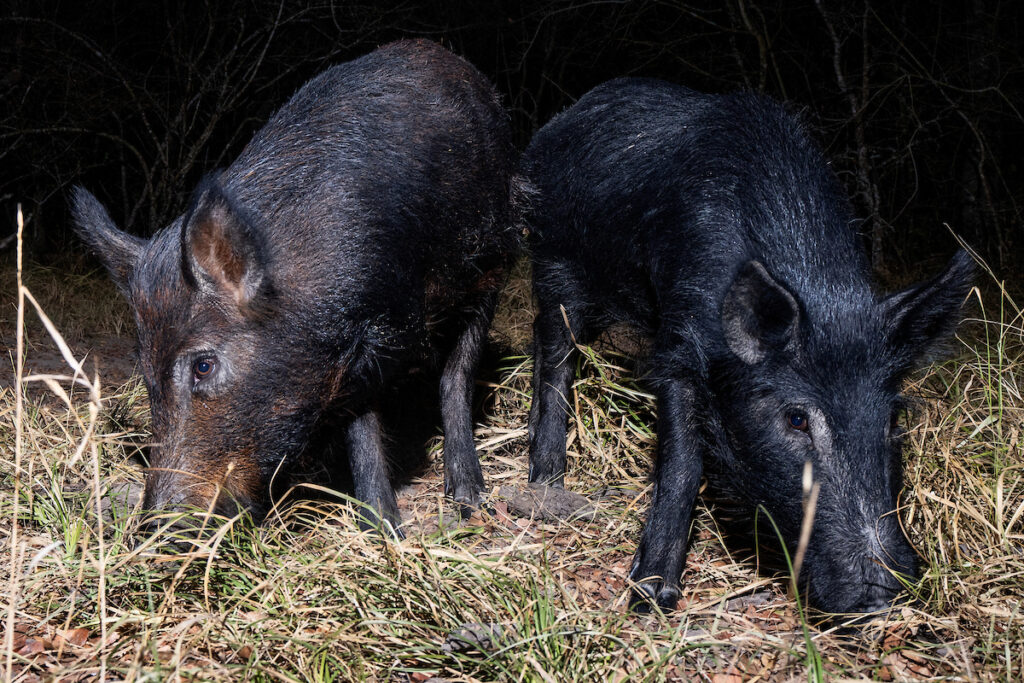
Changes in E. coli bacteria levels can be associated with variation in temperature, streamflow, and dissolved oxygen. However, increased E. coli bacteria can also be the result of nonpoint source pollution. Waste from feral hogs, pets, livestock, or even humans can be washed into the creek. Reducing sources of pollution is the goal of the Mill Creek Watershed Partnership, so tracking the level of E. coli bacteria in the creek is crucial to identifying pollution sources and measuring project effectiveness. We measure E. coli bacteria because it matters!
Watershed Calendar
Spring 2026 – Texas Watershed Steward Program
Join us for a one-day educational program designed to improve the quality of Texas’ water resources by educating and informing local stakeholders about their watershed, potential impairments, and steps that can be taken to help improve and protect water quality in their watershed. Learn more at tws.tamu.edu.
Spring 2026 – Stakeholder Meeting
Want to have a say in what educational events, projects, and programs we prioritize? Make your voice heard and enjoy networking with us! Look for a save-the-date in our next newsletter!
————————————————————————————————
Funding for this effort is provided through a Clean Water Act §319(h) Nonpoint Source Grant administered by the Texas State Soil and Water Conservation Board from the U.S. Environmental Protection Agency.
Texas A&M AgriLife Extension Service is an equal opportunity employer and program provider.
A Note from Your Watershed Coordinator


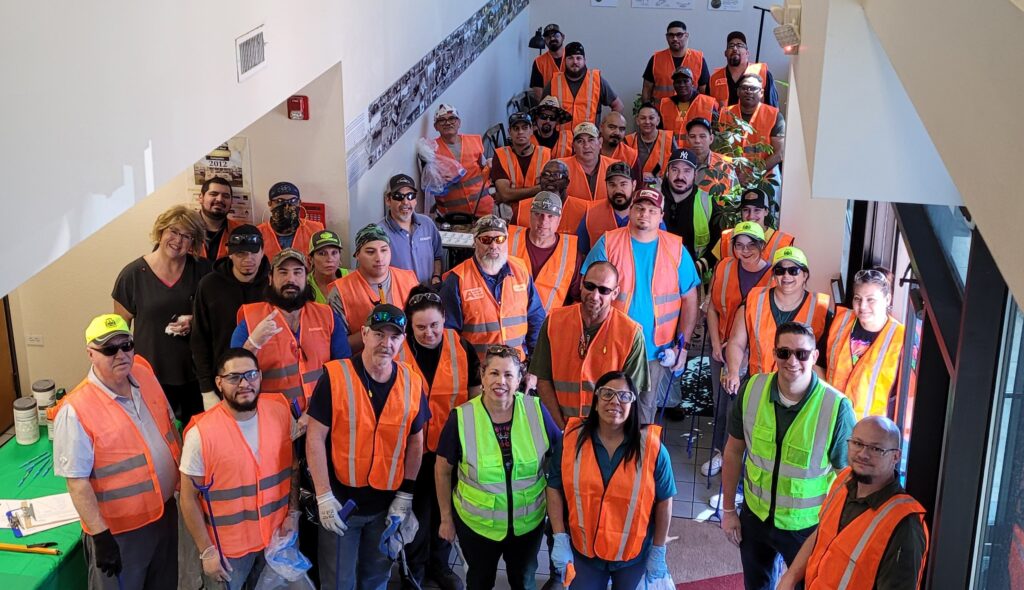
Thank you so much to everyone who contributed to our 12th Annual Geronimo and Alligator Creeks Spring Cleanup in April – we had a wonderful event, with 158 volunteers who removed over 2,500 lbs. of waste from the watershed! Since the first cleanup in 2013, the watershed partnership has removed more than 40,000 lbs. of waste in total, all thanks to your support in donating, volunteering, and advertising for our project. If you want to join in our efforts to make a real difference in the community, be on the lookout for information about our Fall Cleanup coming October 4, 2025.
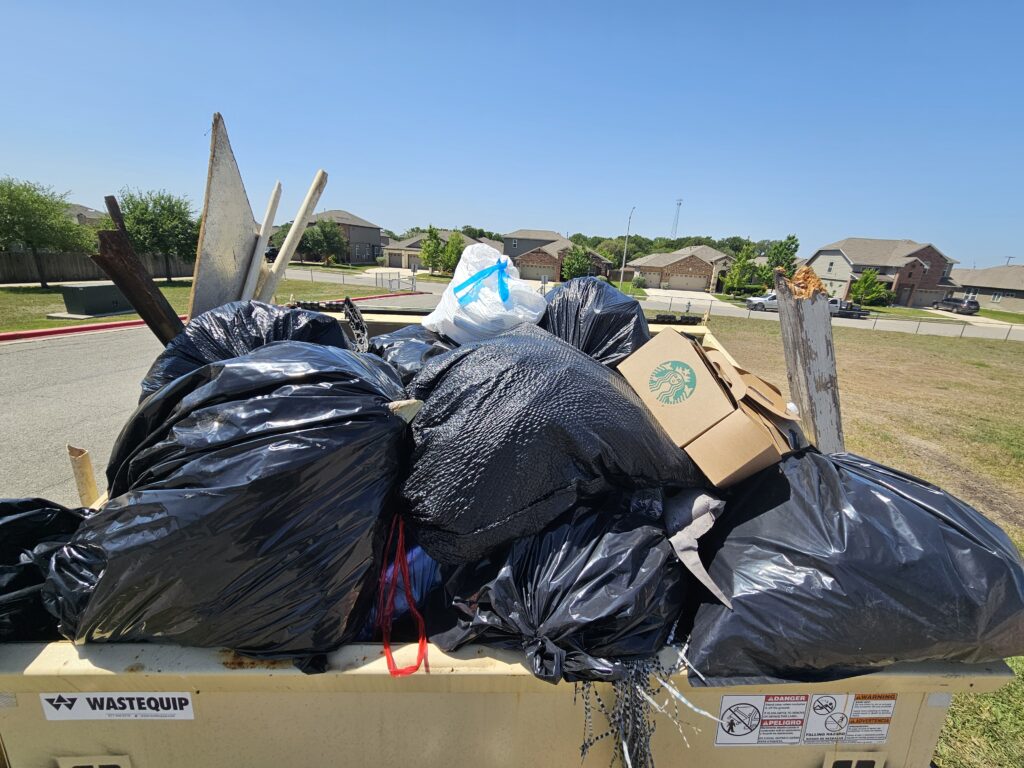
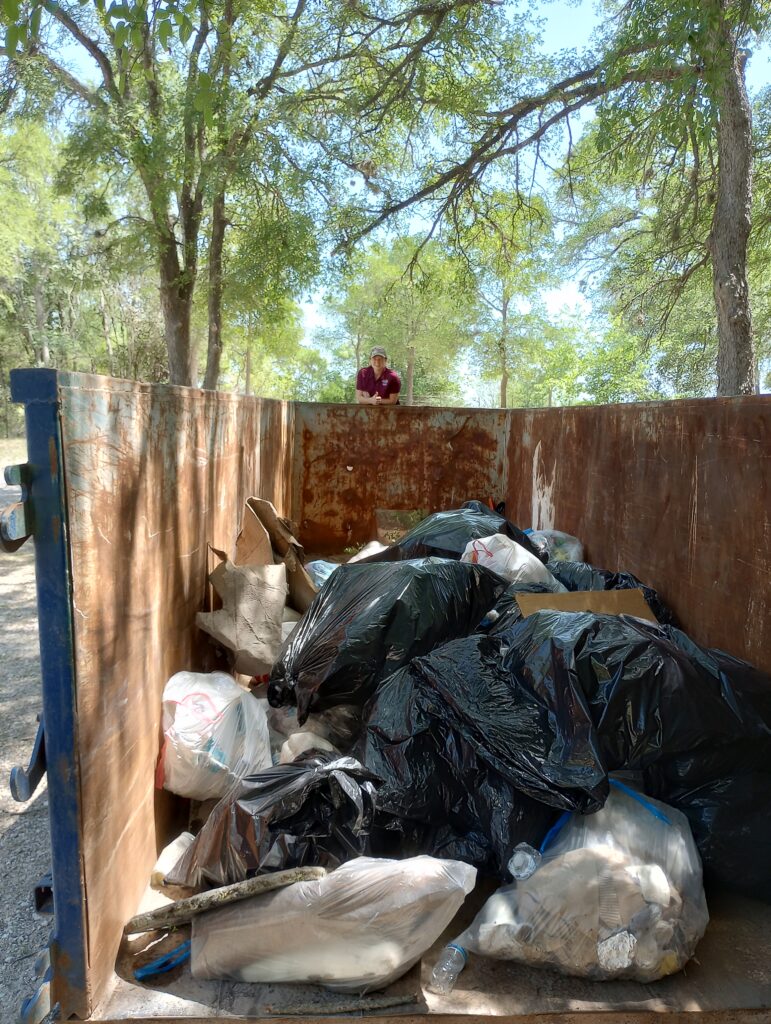
A quick announcement as we head into July – I will be going on maternity leave soon and expect to be back in late August or early September. Extensive planning has been done to ensure that there is no significant lapse in implementation of the watershed protection plan while I am gone. However, if you need anything in my absence, Dr. Jake Mowrer will be your main point of contact. He can be reached at jake.mowrer@ag.tamu.edu or 979-321-5916.
Best wishes,
Annalee Epps
Project Website Redesign

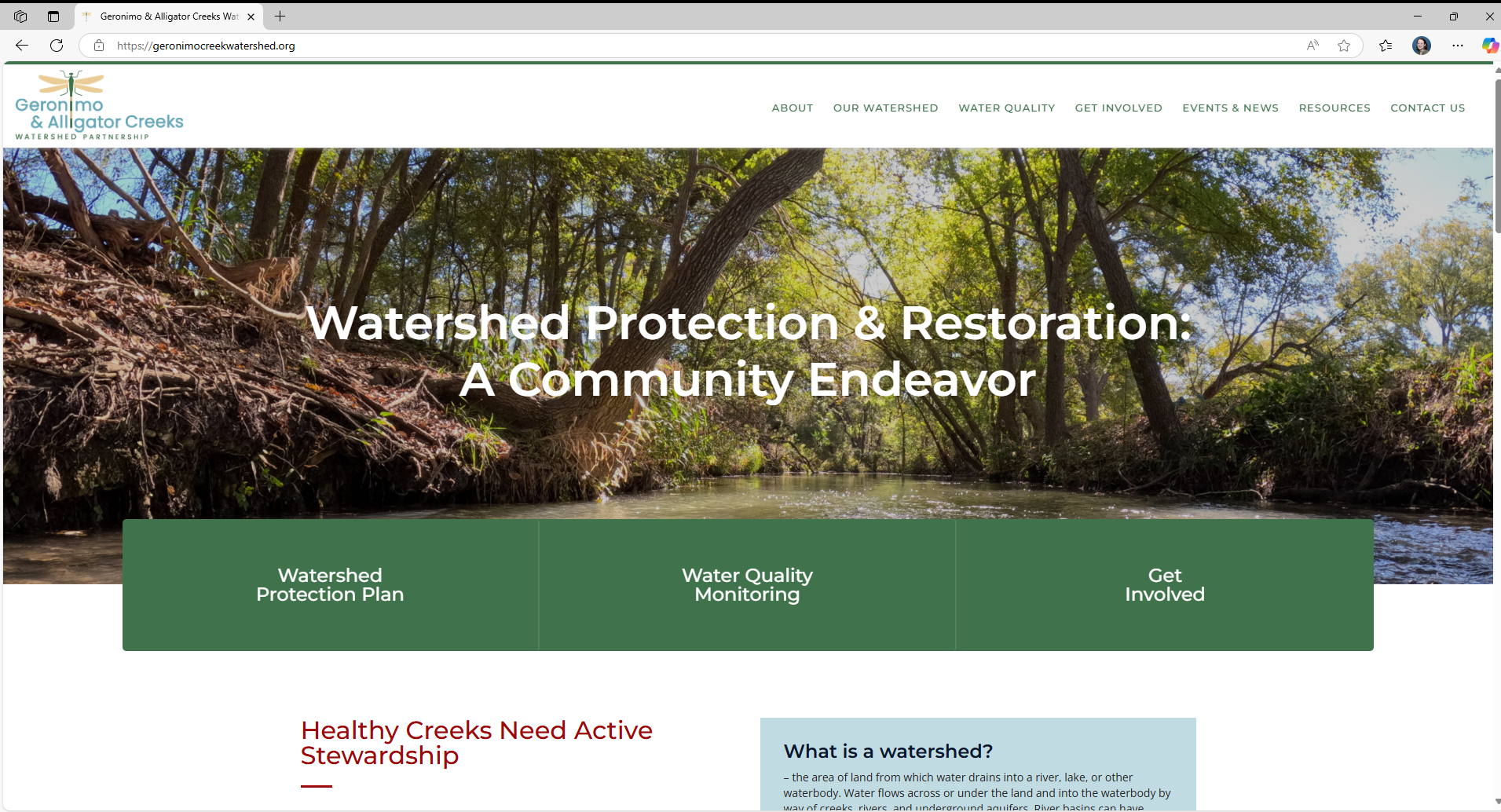
The Geronimo and Alligator Creeks Watershed Partnership relies on stakeholder involvement! This means we prioritize keeping you up to date on all the news, events, and information available about the project. While our website has filled this important role for many years, we recently got the opportunity to refresh and restructure the site to better serve you. We even got a beautiful new logo that better reflects the core values of the Partnership. Check it all out at geronimocreekwatershed.org!

Have thoughts or feedback on the new website or logo? We welcome your input! Email us today at geronimo.alligator@ag.tamu.edu.
Measurements Matter: pH
Is the water in Geronimo and Alligator Creeks acidic, neutral, or basic? How do we know the pH of the creek, and does it change over time? While these may not be questions you have considered before, pH plays an important role in many chemical and biological creek processes. But what does pH actually tell us about water quality in Geronimo and Alligator Creeks? This is the fifth article in our series exploring the water quality data collected in our watershed and why it matters.

A controlling factor in many chemical reactions, pH is a measure of Hydrogen ions (H+) in the water. It is often assessed using color-changing reagents on a water sample or with a sensor that is placed directly in the creek. Reported as a number between 1-14, pH is actually measured on a logarithmic scale, meaning a small change in the numeric value can reflect a huge change in H+ concentration. A larger number indicates a lower concentration of H+ in the water. In natural water bodies, pH usually ranges between 6.5-8. The normal pH of a creek is often determined by the soil and rocks that it flows through.
Changes in water pH can be caused by point or nonpoint source pollution. Shifts or fluctuation in pH can be a cause of immediate or long-term concern. The plants, fish, and insects that live in the creek are adapted to thrive in a specific pH range. If the pH leaves that range, species might migrate away or simply die off in that creek segment. Also, some metals and chemicals change form when exposed to a different pH and can become toxic (e.g. Copper and Ammonia). It is important to consider pH when assessing water quality and stream health. We measure pH because it matters!
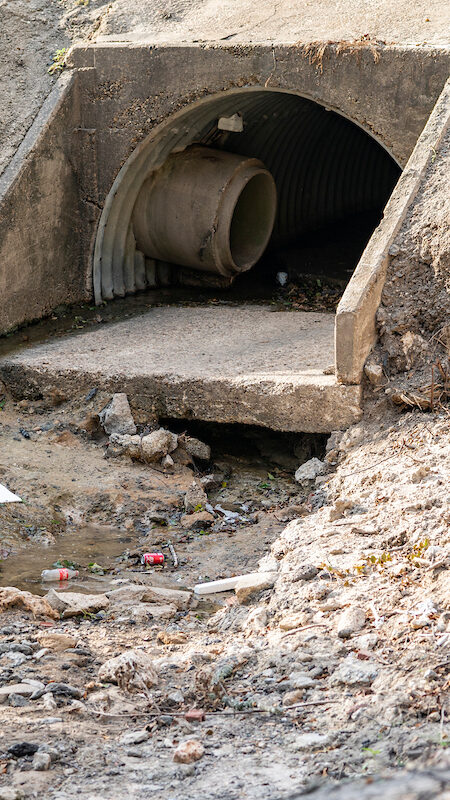
Watershed Calendar
September 12 – Lone Star Healthy Streams Workshop
Join us for a FREE educational event in Seguin. Learn about feral hog management, brush control, grazing practices, and landowner water quality planning from local and state experts! This FREE program will include a catered lunch and 3 TDA CEUs. The Lone Star Healthy Streams Program provides education on the connection between grazing practices and water quality management. Find more information at lshs.tamu.edu!
October 4 – Fall Cleanup
Save the date for the Fall Cleanup! Look for more information to be posted on geronimocreekwatershed.org in late August.
Funding for this effort is provided through a Clean Water Act §319(h) Nonpoint Source Grant administered by the Texas State Soil and Water Conservation Board from the U.S. Environmental Protection Agency.
Texas A&M AgriLife Extension Service is an equal opportunity employer and program provider.
Current newsletter of The Geronimo and Alligator Creeks Watershed Partnership
